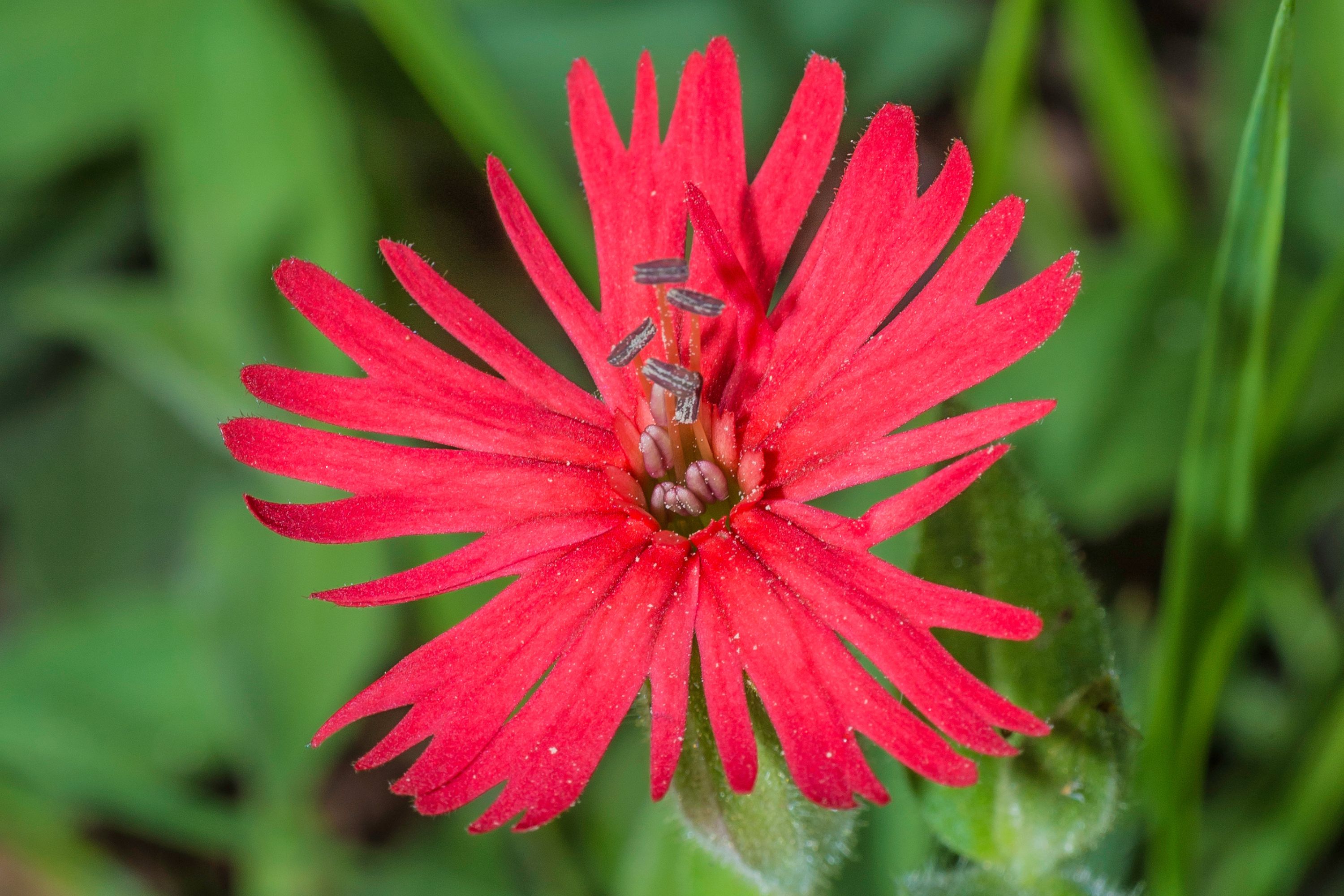Fringed Indian pink
(Silene laciniata)

Description
Silene laciniata is a perennial herb in the family (Caryophyllaceae), commonly known as fringed Indian pink, cardinal catchfly, Mexican campion, Mexican-pink, and campion. It is native to the southwestern United States from California to Texas, as well as northern Mexico. Silene laciniata grows from a taproot and has one or many decumbent to erect stems which may exceed a meter (3 ft.) in height. many stems. The slender, branching stem is glandular and sticky. The lance-shaped leaves are up to about 10 centimeters long by 2 wide, with smaller ones occurring on upper parts of the plant. The inflorescence may have one flower or many, each on a long pedicel. The flower has a tubular green or reddish calyx of fused sepals which is lined with ten prominent veins. The five bright red petals are each divided deeply into 4 to 6 long, pointed lobes, sometimes appearing fringed. The pistil has three parts. There are ten stamens. Silene is a genus of flowering plants in the family Caryophyllaceae. Containing nearly 900 species, it is the largest genus in the family. Common names include campion and catchfly. Many Silene species are widely distributed, particularly in the northern hemisphere. Members of this genus have been the subject of research by preeminent plant ecologists, evolutionary biologists, and geneticists, including Charles Darwin, Gregor Mendel, Carl Correns, Herbert G. Baker, and Janis Antonovics. Many Silene species continue to be widely used to study systems, particularly in the fields of ecology and evolutionary biology. The genus has been used as a model for understanding the genetics of sex determination for over a century. Silene species commonly contain a mixture of hermaphroditic and female (or male-sterile) individuals (gynodioecy), and early studies by Correns showed that male sterility could be maternally inherited, an example of what is now known as cytoplasmic male sterility. Two independent groups of species in Silene have evolved separate male and female sexes (dioecy) with chromosomal sex determination that is analogous to the system found in humans and other mammals. Silene flowers are frequently visited by flies, such as Rhingia campestris. Silene species have also been used to study speciation, host-pathogen interactions, biological species invasions, adaptation to heavy-metal-contaminated soils, metapopulation genetics, and organelle genome evolution.
Taxonomic tree:







